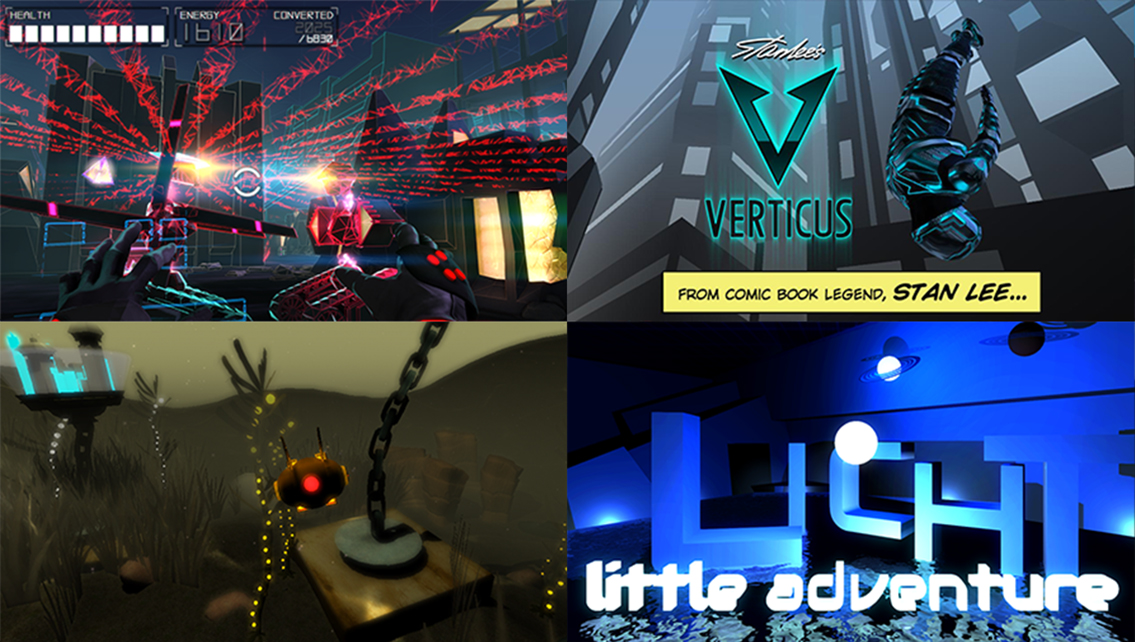M1 Interactive recently partnered with Leap Motion to create a freely available starter kit for all developers who want to build the next generation of games on the Unity platform. This post is the second in a three-part series; you can read the first post here.
Note: The Starter Kit has been deprecated. Be sure to download our Unity Core Assets (or Core Assets: VR Edition) from developer.leapmotion.com/downloads/unity.
The Leap Motion App Store, has a variety of innovative games that have been built on the Unity platform. The best ones take advantage of the device’s capabilities without tiring or confusing the player. Here are four that offer some intriguing insights for developers who want to get started.
Stan Lee’s Verticus
Stan Lee’s Verticus is a great example of a mobile app that works really well with Leap Motion on desktop platforms. Originally developed for iOS, Verticus is an endless falling game that relies on quick, fluid motions – which would feel really clunky with a mouse, but works nicely with just a finger.
The gameplay also illustrates something important that most developers overlook when starting to develop with the Leap Motion SDK – ignore ergonomics at your peril. The flip side? As long as you keep ergonomics in mind, you’ll find that arm fatigue isn’t much of an issue. For steady interactions, small actions should scale upwards, rather than requiring big, sweeping gestures that are 1:1 with the actions on the screen. Apps like Verticus show how the sensitivity of the Leap Motion device lets you move characters across the screen by moving your hand a few inches.
Autonomous
Double Fine’s Autonomous is a free Windows app built in Unity that combines Leap Motion interaction with the keyboard – taking the mouse out of the equation. With your left hand on the keyboard, your character can move through the gameworld (WASD) and pick up objects (E), while your right hand controls the camera view and allows you to throw objects and charge attacks. Plus, Autonomous represents your hands on screen – complete with virtual keys for your left hand – to draw you further into the gameplay.
LICHT little adventure
Visual feedback is one of the biggest challenges for developers who are just starting with the Leap Motion platform. How can players know where they “are” within the 3D space? Gerald Terveen’s LICHT little adventure offers one of the best solutions we’ve seen to this problem.
The game takes place in a dark maze. As a dark ball, you must push a glowing ball of light through collapsing walls and corridors. Your position within the space is determined by your fingertip, and constantly reinforced through the use of light and shadow. Terveen recently rolled out Oculus Rift support to allow another level of immersion within the gameworld.
Volantes
Volantes is another free app that uses simple two-handed navigation controls to fly through a multiplayer base-capture game. The controls are simple and intuitive for a flight simulator, without requiring too much from the player. Pitching your hands up and down lets you steer up or down. Instead of a one-handed control that would use left/right palm pitching to steer left/right, Volantes lets players move one hand lower than the other – avoiding the frustration of attempting to control everything through a single palm pitch.
One of the developers of Volantes, Pohung Chen, is also a Leap Motion engineer who has made many of his Unity project files available to the community – including the source for Telekinetic, another fully realized game in the App Store. You can see his work on Bitbucket or here on Developer Labs.
In our next post, we’ll take a look at two of the biggest challenges that we overcame in developing our Leap Motion Starter Kit – left vs. right hands and ergonomics.
Update 9/12/2014: The Airspace Store is now simply called the Leap Motion App Store.





